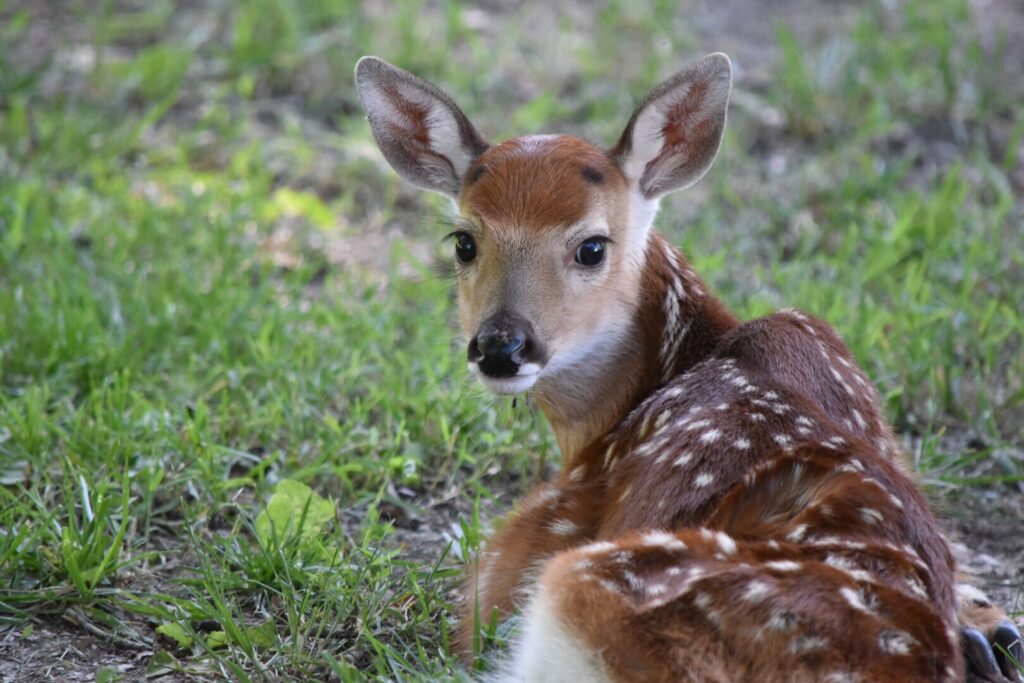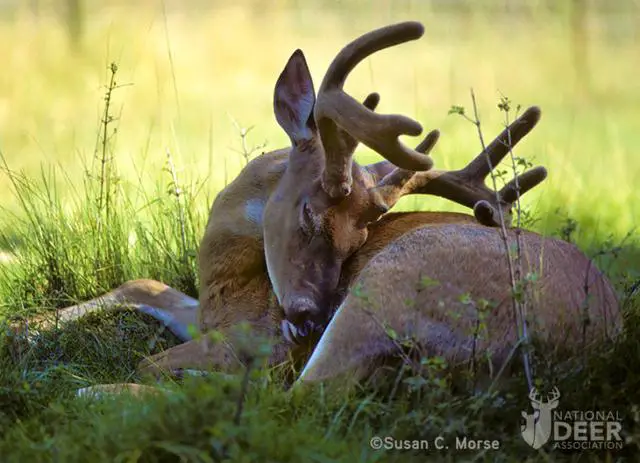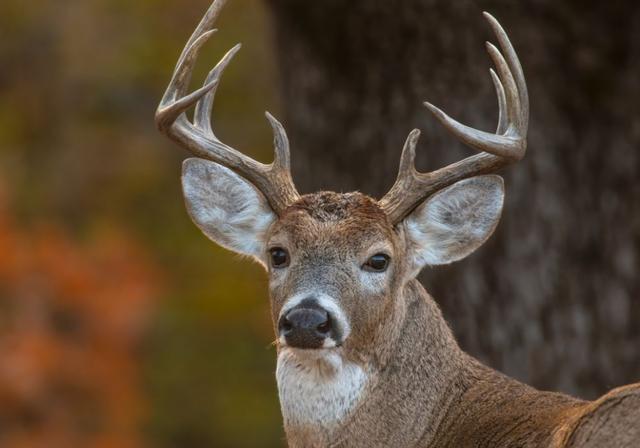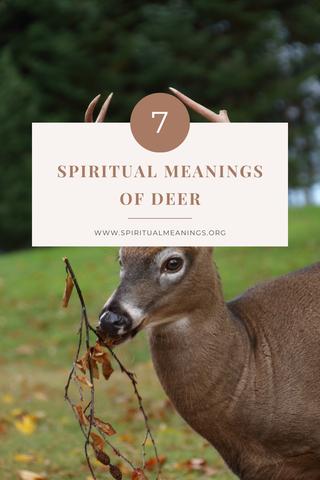Have you ever wondered what it means when you come across a deer laying down? Discover the hidden messages behind this behavior and unlock the fascinating insights into the world of deer. Explore the possible reasons and symbolism associated with a deer resting, as we delve into their habits and instincts.
1. Understanding the Meaning of a Deer Laying Down: Rest or Distress?

Resting or Taking a Nap
In some cases, when you see a deer laying down, it may simply mean that the deer is resting or taking a nap. Deer often lay down to conserve energy, especially during the heat of the day. They may fold their legs beneath their body and have their head up or resting on the ground. This relaxed posture indicates that the deer is at ease and not engaged in any immediate activity.
Injured or in Distress
However, if the deer appears to be injured or in distress, it could be a sign that something is wrong and the deer may need help. In such cases, it’s best to contact local wildlife authorities or animal rescue organizations to provide assistance to the deer. If you observe a deer lying down in the same position for an extended period, it may indicate that it is resting rather than deeply asleep.
Distinguishing Sleep Patterns
Distinguishing whether a deer is sleeping or simply lying down can be challenging as they do not exhibit clear-cut sleep patterns like humans do. However, there are some behavioral and physical cues that can help differentiate between the two:
– Posture: When a deer is lying down to rest, its body position is relatively relaxed with folded legs beneath its body.
– Eye Movement: Deeply sleeping deer usually have closed eyes, but they may enter lighter sleep stages where their eyes remain open or partially closed.
– Awareness and Reaction: Sleeping deer are generally less alert and responsive to their surroundings compared to those who are merely resting.
– Duration: Deer do not sleep for extended periods like humans do; their rest periods are often shorter and intermittent.
– Movement: Awake and alert deer may shift their body position or change the orientation of their head or ears.
It’s important to note that interpreting deer behavior can be challenging, and individual deer may exhibit variations in their resting or sleep patterns. It is crucial to maintain a safe distance and avoid disturbing or approaching deer in their natural habitat.
2. Decoding the Significance of a Deer Lying Down: Resting or Injured?

When encountering a deer lying down, it is important to determine whether it is simply resting or if there may be an underlying issue such as injury or distress. In some cases, a deer may be laying down to conserve energy and take a nap, especially during the heat of the day. This behavior is common for deer and is considered a normal resting position.
However, if the deer appears to be injured or in distress, it could be an indication that something is wrong and the deer may require assistance. In such situations, it is best to contact local wildlife authorities or animal rescue organizations who can provide the necessary help for the deer.
To differentiate between a resting deer and an injured one, several cues can be observed. When a deer is lying down to rest, its body position is relaxed with its legs folded beneath its body. The head may either be up or resting on the ground. The overall appearance of the deer’s body suggests ease and lack of immediate activity.
In terms of eye movement, sleeping deer typically have their eyes closed. However, they may also enter a lighter sleep stage where their eyes remain open or partially closed. In this state, their eyes might appear glassy or unfocused, occasionally blinking or moving their eyelids.
Another factor to consider is the awareness and reaction of the deer. Sleeping deer are generally less alert and responsive to their surroundings. If a deer is merely resting, it may still exhibit some level of vigilance by scanning its surroundings or twitching its ears in response to stimuli like sounds or movements.
Duration also plays a role in distinguishing between rest and deep sleep for deer. While humans have extended periods of sleep, deer’s rest periods are often shorter and intermittent. If you notice a deer lying down in the same position for an extended period without any significant movement, it is more likely to be resting rather than deeply asleep.
Lastly, slight movements by the deer can indicate that it is still awake and alert to some extent. They may shift their body position or change the orientation of their head or ears while lying down.
It is important to note that interpreting deer behavior can be challenging, and individual deer may exhibit variations in their resting or sleep patterns. Therefore, it is crucial to maintain a safe distance and avoid disturbing or approaching deer in their natural habitat.
3. Interpreting the Behavior of a Deer Laying Down: Resting or Seeking Help?

When observing a deer laying down, it is important to consider the context and behavior of the deer to determine whether it is simply resting or in need of help. Here are some factors to consider:
1. Posture: A deer that is resting will typically have a relaxed body position, with its legs folded beneath its body and possibly its head up or resting on the ground. The deer’s body appears at ease and not engaged in any immediate activity.
2. Eye movement: When deer are in a state of deep sleep, their eyes are usually closed. However, they may enter a lighter sleep stage where their eyes remain open or partially closed. In this state, their eyes may appear glassy or unfocused, and they may occasionally blink or move their eyelids.
3. Awareness and reaction: Sleeping deer are generally less alert and responsive to their surroundings. If a deer is merely resting, it may still exhibit some level of vigilance, regularly scanning its surroundings or twitching its ears in response to stimuli like sounds or movements.
4. Duration: Deer do not sleep for extended periods like humans do. Their rest periods are often shorter and intermittent. If you observe a deer lying down in the same position for an extended period, it is more likely resting rather than deeply asleep.
5. Movement: When deer are lying down, they may shift their body position or change the orientation of their head or ears slightly. This slight movement indicates that they are still awake and alert to some extent.
It’s important to note that interpreting deer behavior can be challenging, as individual deer may exhibit variations in their resting or sleep patterns. It is also crucial to maintain a safe distance and avoid disturbing or approaching deer in their natural habitat.
If you suspect that the deer may be injured or in distress, it is best to contact local wildlife authorities or animal rescue organizations to get the deer the assistance it needs.
4. Unraveling the Mystery: What Does it Mean When You Spot a Deer Laying Down?

When you see a deer laying down, it can have different meanings depending on the context. In some cases, it may simply indicate that the deer is resting or taking a nap to conserve energy, especially during the heat of the day. However, if the deer appears injured or distressed, it could be a sign that something is wrong and the deer may need assistance.
If you come across a deer that seems to be in distress or injured, it’s best to contact local wildlife authorities or animal rescue organizations for help. They can provide the necessary assistance and care for the deer.
The behavior of deer can vary depending on factors such as time of day and moon phase. Generally, deer tend to bed down during the heat of the day and are more active at dusk and dawn. They may also feed at night, but this can be influenced by moon phase and local weather conditions.
If a deer suddenly appears out of nowhere, it may be a sign for you to follow your intuition. In Native American folklore, if the Deer is your Spirit Animal, it signifies that you are a highly sensitive person with strong intuition. You navigate through life gracefully but with purpose and are able to adapt quickly when necessary. The deer also symbolizes regeneration and has the ability to handle challenges with gentleness and grace.
Distinguishing between whether a deer is sleeping or simply lying down can be challenging as they do not exhibit clear-cut sleep patterns like humans do. However, there are some behavioral and physical cues that can help differentiate between the two.
When a deer is lying down to rest, its body position is usually relaxed with its legs folded beneath its body. Its head may be up or resting on the ground, indicating ease and lack of immediate activity.
In deep sleep, deer typically close their eyes; however, they may also enter a lighter sleep stage where their eyes remain open or partially closed. In this state, their eyes may appear glassy or unfocused, and they may occasionally blink or move their eyelids.
Sleeping deer are generally less alert and responsive to their surroundings compared to resting deer. Resting deer may still exhibit some level of vigilance by scanning their surroundings or twitching their ears in response to stimuli like sounds or movements.
Deer do not sleep for extended periods like humans do. Their rest periods are often shorter and intermittent. If you observe a deer lying down in the same position for an extended period, it is more likely resting rather than deeply asleep.
When deer are lying down, they may shift their body position or change the orientation of their head or ears slightly. This slight movement indicates that they are still awake and alert to some extent.
It’s important to note that interpreting deer behavior can be challenging, and individual deer may exhibit variations in their resting or sleep patterns. It is crucial to maintain a safe distance and avoid disturbing or approaching deer in their natural habitat.
Overall, spotting a deer laying down can have various meanings depending on the circumstances. Whether it signifies rest and conservation of energy or indicates distress and need for help, it is essential to respect the natural behavior of these beautiful creatures and seek professional assistance when necessary.
5. The Symbolism Behind a Deer Laying Down: Rest, Intuition, or Something Else?

Seeing a deer laying down could mean a few different things, depending on the context. In some cases, it could simply mean that the deer is resting or taking a nap. Deer are known to lay down to conserve energy, especially during the heat of the day.
However, if the deer appears to be injured or in distress, it may be a sign that something is wrong and the deer may need help. In such cases, it’s best to contact local wildlife authorities or animal rescue organizations to get the deer the assistance it needs.
It maybe nothing, could be injured, depends on time of day and moon phase. Usually deer bed down in the heat of the day, they tend to move at dusk and dawn. Many feed at night, but again depends on moon phase and local weather. Many days of high winds and driving rain will force deer to lay low. Then after the storm passes they may feed at any time.
If you see a deer appear out of nowhere it is a sign that you must follow your intuition. If the Deer is your Spirit Animal, in Native American folk lore it means that you are a highly sensitive person with strong intuition. You move though life gracefully but with purpose, and can change directions quickly if necessary. The deer also has the ability to regenerate because he is highly attuned to life’s mysteries. He also has the power to handle challenges with gentleness and grace.
Distinguishing whether a deer is sleeping or simply lying down can be challenging, as deer do not exhibit clear-cut sleep patterns like humans do. However, there are some behavioral and physical cues that can help differentiate between the two:
– Posture: When a deer is lying down to rest, its body position is relatively relaxed. Its legs are typically folded beneath its body, and it may have its head up or resting on the ground. The deer’s body appears at ease and not engaged in any immediate activity.
– Eye movement: When deer are in a state of deep sleep, their eyes are usually closed. However, they may also enter a lighter sleep stage where their eyes remain open or partially closed. In this state, their eyes may appear glassy or unfocused, and they may occasionally blink or move their eyelids.
– Awareness and reaction: Sleeping deer are generally less alert and responsive to their surroundings. If a deer is merely resting, it may still exhibit some level of vigilance, regularly scanning its surroundings or twitching its ears in response to stimuli like sounds or movements.
– Duration: Deer do not sleep for extended periods like humans do. Their rest periods are often shorter and intermittent. If you observe a deer lying down in the same position for an extended period, it is more likely resting rather than deeply asleep.
– Movement: When deer are lying down, they may shift their body position or change the orientation of their head or ears. This slight movement indicates that they are still awake and alert to some extent.
Keep in mind that interpreting deer behavior can be challenging, and individual deer may exhibit variations in their resting or sleep patterns. It’s important to maintain a safe distance and avoid disturbing or approaching deer in their natural habitat.
6. Exploring the Different Interpretations of a Deer Lying Down: From Rest to Spiritual Signs
Seeing a deer lying down can have various meanings depending on the context. In some cases, it may simply indicate that the deer is resting or taking a nap. Deer often lie down to conserve energy, especially during the heat of the day.
However, if the deer appears to be injured or in distress, it could be a sign that something is wrong and that the deer may need help. In such situations, it is best to contact local wildlife authorities or animal rescue organizations to ensure the deer receives appropriate assistance.
The behavior of deer lying down can also depend on factors such as the time of day and moon phase. Typically, deer bed down during the heat of the day and are more active at dusk and dawn. They may also feed at night, although this can vary depending on moon phase and local weather conditions. Additionally, high winds and driving rain may cause deer to seek shelter and stay low until the storm passes.
In Native American folklore, seeing a deer appear out of nowhere can hold spiritual significance for those who consider the deer their spirit animal. It suggests that you are a highly sensitive person with strong intuition. You navigate through life gracefully but with purpose and have the ability to adapt quickly when necessary. The deer’s symbolism also encompasses regeneration, as they are attuned to life’s mysteries and possess the power to handle challenges with gentleness and grace.
Differentiating between a sleeping deer and one simply lying down can be challenging since they do not exhibit clear-cut sleep patterns like humans do. However, certain behavioral and physical cues can help distinguish between the two:
– Posture: When a deer is resting, its body position is relaxed. Its legs are typically folded beneath its body, and its head may be up or resting on the ground.
– Eye movement: During deep sleep, deer usually close their eyes. However, they may enter a lighter sleep stage where their eyes remain open or partially closed. In this state, their eyes may appear glassy or unfocused, and they may occasionally blink or move their eyelids.
– Awareness and reaction: Sleeping deer are generally less alert and responsive to their surroundings. If a deer is merely resting, it may still exhibit some level of vigilance by scanning its surroundings or twitching its ears in response to stimuli.
– Duration: Deer do not sleep for extended periods like humans do. Their rest periods are often shorter and intermittent. If you observe a deer lying down in the same position for an extended period, it is more likely resting rather than deeply asleep.
– Movement: When deer are lying down, they may shift their body position or change the orientation of their head or ears slightly. This indicates that they are still awake and somewhat alert.
It is important to remember that interpreting deer behavior can be challenging, as individual deer may exhibit variations in their resting or sleep patterns. It is crucial to maintain a safe distance and avoid disturbing or approaching deer in their natural habitat.
Overall, understanding the different interpretations of a deer lying down can provide insights into the behavior and symbolism associated with these majestic creatures. Whether it signifies rest, distress, or spiritual significance, observing and respecting deer from afar allows us to appreciate their beauty while ensuring their well-being in the wild.
In conclusion, if you spot a deer lying down, it is likely that they are simply resting or seeking shelter from the elements. This behavior is normal and does not necessarily indicate any immediate danger or distress. However, it is important to maintain a respectful distance and avoid disturbing them to ensure their well-being in their natural habitat.











































